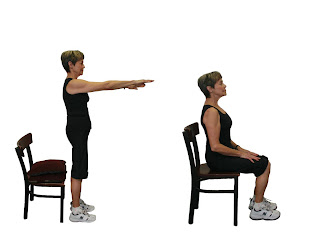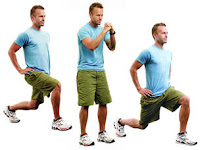Was recently asked by a Twitter follower what the best exercise for the low back would be. My unsatisfying answer: “Well, what do you need a strong back for?” Taken at face value it might seem that I am denying the need for a strong back, but nothing could be farther from the truth, although I do think the pelvic and leg muscles are more likely to be in need of strengthening.
Nevertheless, I think the wisest approach to determining which exercises should be carried out is to think functionally–that is, what are you attempting to improve? Do you need power for a sport, endurance, or is it to alleviate low back pain? Really, the end result matters.
So this particular gentleman disclosed to me that he was having pain and difficulty getting up and out of a chair. Okay…I’ve got an answer for this. The best exercise to reduce pain and difficulty getting in and out of a chair, then…is to get in and out of a chair. Forget back extensions, or superman, or anything like that–be functional: Reproduce the activity you need to do. Doesn’t that make sense? Don’t do biceps curls so that you may jump higher…
Watch the video below to get the gist of what I mean. You’ll want to observe some basics, like…keeping your back straight, and tightening your abdominal core. If you are uncertain of how to do that, please watch the video on abdominal hollowing and plank pose. While you’re at it, watch the video on pelvic tilting as well. Gaining control of the abdominal core is essential to strengthening the low back.
So, again, before looking to strengthen a particular area, ask yourself for what purpose, because this will dictate the exercise you need to do. Then do a functional exercise–one that simulates the movement–and you should be cool. Enjoy the vid and the exercise. Thank you, Ricardo.















